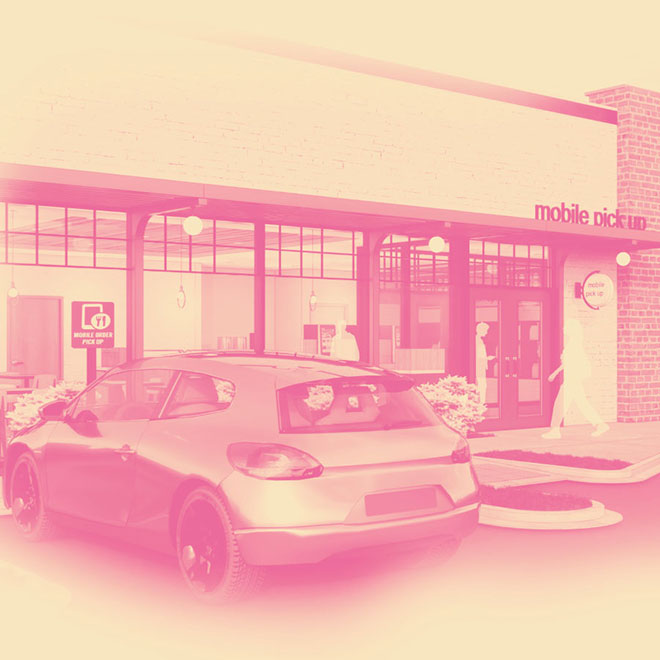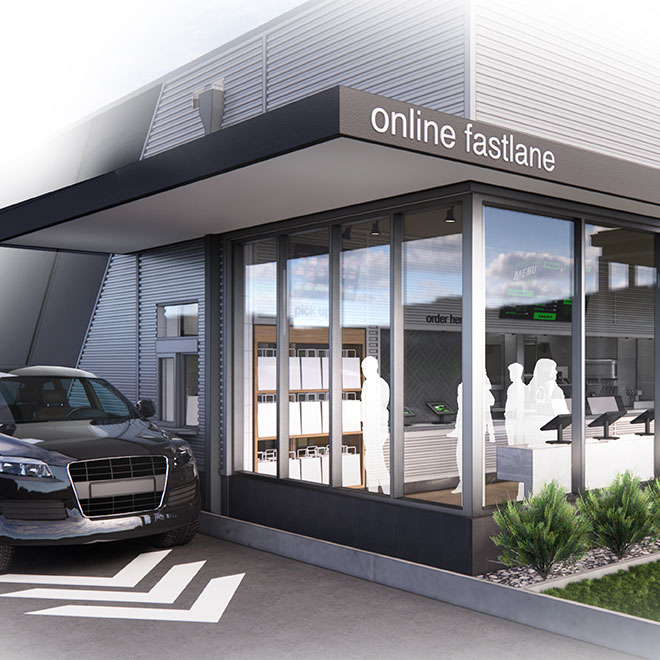
Is Dual Branding Right for My QSR?
A Conversation with Food Service Design Expert Rob Seely, Executive Director of Operations Strategy and Design
Estimated Read Time: 3 Minutes
In the dynamic world of the restaurant industry, staying ahead of the curve is paramount. From our perspective, dual branded quick service restaurants (QSRs), like the well-loved Auntie Anne’s and Cinnabon combo, are staging a remarkable comeback.
In this conversation with Rob Seely, WDs Executive Director of Operations Strategy and Design, we delve into the key considerations for QSR owners pondering the viability of dual branding and the advantages and challenges it entails.

Executive Director of Operations Strategy and Design
Setting the Stage for Success in Dual Branding
Q: Dual branding isn’t for everyone. What attributes of a QSR do you think set it up for success in the dual branding space?
A: There are a lot of attributes needed for dual branding to be successful and it is certainly more complex than “smashing” two concepts together. If I were to pick three critical attributes include the right building design, an effective operating model, and a skilled operator. The design must align with customer expectations and maintain consistency with each brand’s standalone experience. The right operating model must be in place so that both brands can co-exist while meeting the operating metrics of speed of service, labor costs, and food quality. Finally, an operator must master labor management, follow established processes, and integrate the two brands to optimize efficiency and reduce costs.
Choosing the Perfect Pair
Q: What factors should be considered when deciding what two restaurants to pair up?
A: Two key factors include whether both brands will benefit by coming together and whether they will operate well with each other. Both brands should gain advantages from the partnership, such as expanding brand awareness, increasing unit-level sales, or reducing unit investment. These benefits should complement, not compete with, each other. Additionally, understanding how the brands’ operations can integrate, including daily sales velocities, processes, and equipment requirements, is pivotal in achieving revenue goals and meeting customer expectations.
The Resurgence of Dual Branding
Q: Why do you think we’re seeing a rise in dual branded restaurants?
A: The driving factors are straightforward – increased unit-level sales and unit volume and decreased per-unit investment. Dual branding opens markets that are otherwise not viable options because of costs and/or brand presence.
Hiring for Success in Dual Branding
Q: What should hiring managers look for in associates when hiring for dual branded spaces?
A: Beyond the typical qualities, associates should be adaptable to different roles and responsibilities, even within a single shift. With a typical QSR, an associate might have a consistent role or tasks, i.e. food prep, grill station, etc. In a dual branded environment, associates may switch from working the grill to baking cookies. Flexibility in handling diverse responsibilities is a valuable trait for success.
Operational Challenges and Solutions
Q: What is the trickiest problem from an operational standpoint when joining two restaurants?
A: Two crucial considerations are space layout and labor guidelines. Efficiently organizing shared equipment to minimize redundancy and aligning with equipment-related processes is vital. Furthermore, adjusting labor guidelines to facilitate shared labor and flexible deployment can significantly reduce costs.
Hungry for more? Download our comprehensive POV to learn about the leading players in the dual branding space and discover how this resurging trend benefits brands, operators, and consumers alike.




